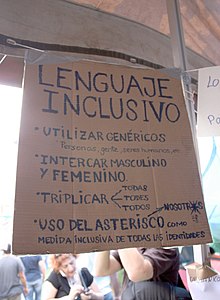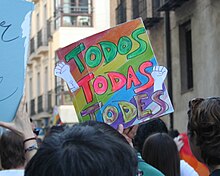No coordinates found
Gender neutrality in languages with grammatical gender
Usage of wording balanced in its treatment of the genders in a non-grammatical senseGender neutrality in languages with grammatical gender is the usage of wording that is balanced in its treatment of the genders in a non-grammatical sense. For example, advocates of gender-neutral language challenge the traditional use of masculine nouns and pronouns when referring to two or more genders or to a person of an unknown gender in most Indo-European and Afro-Asiatic languages. This stance is often inspired by feminist ideas about gender equality. Gender neutrality is also used colloquially when one wishes to be inclusive of people who identify as non-binary genders or as genderless.
Read article
Top Questions
AI generatedMore questions


